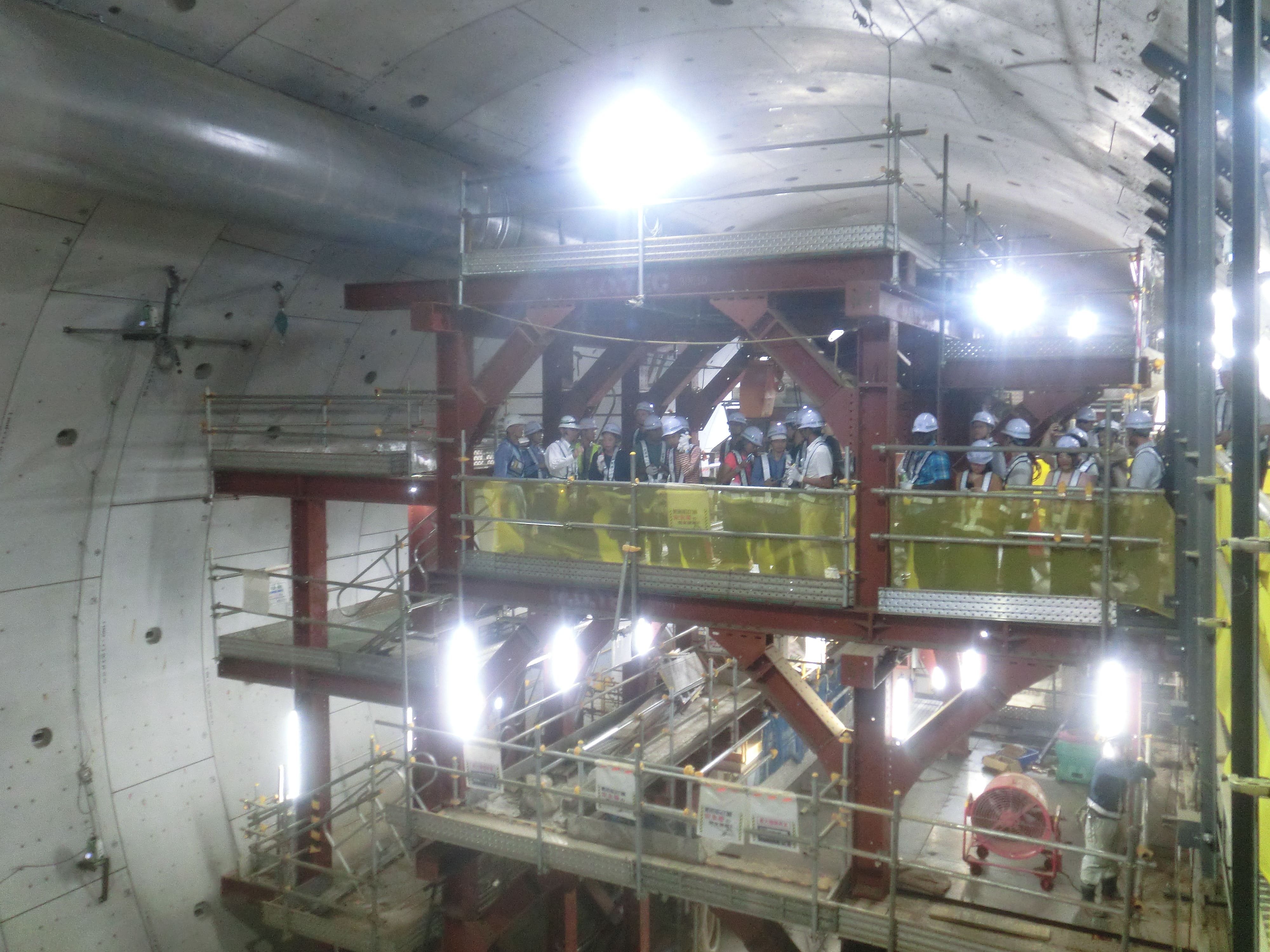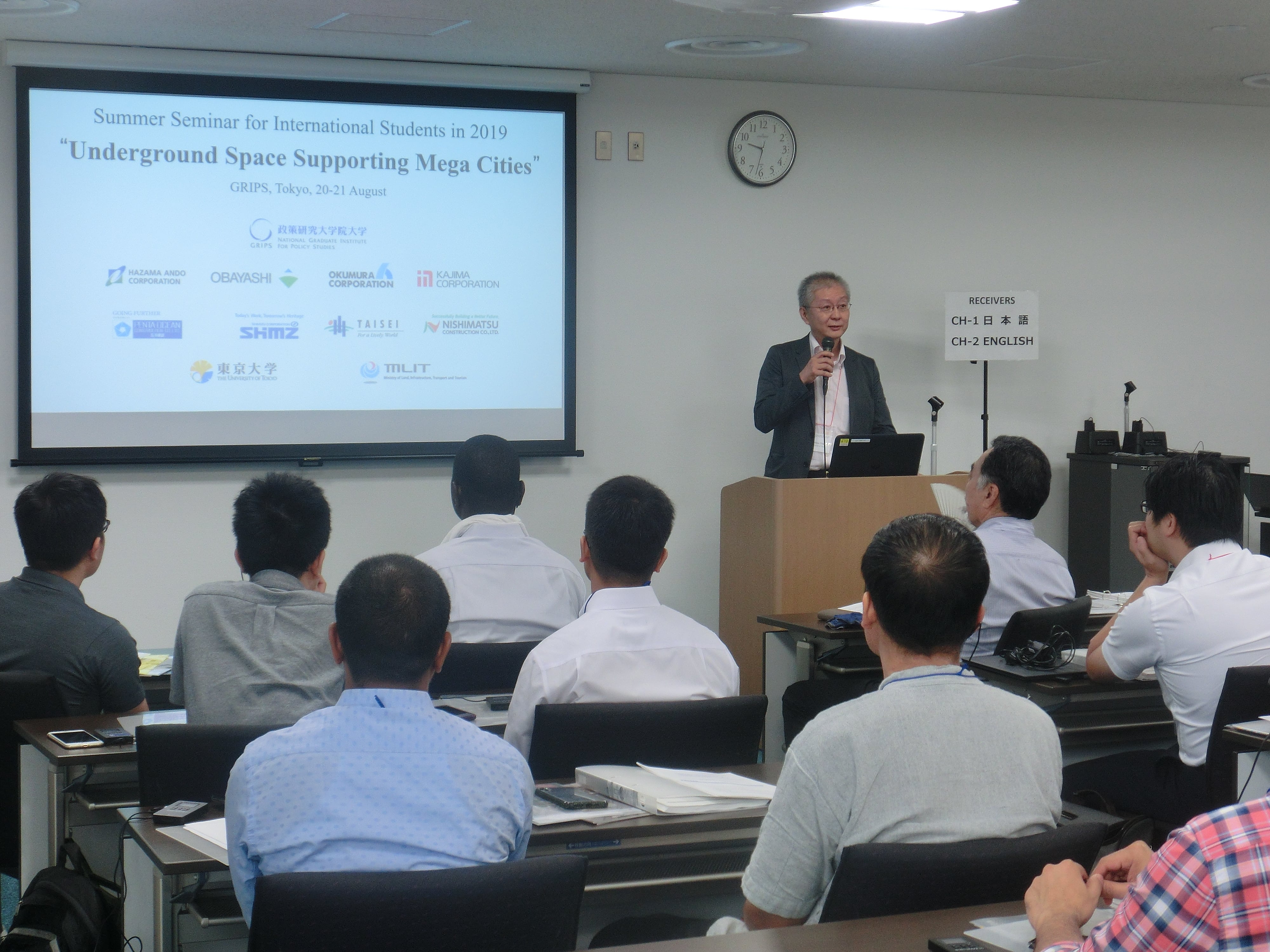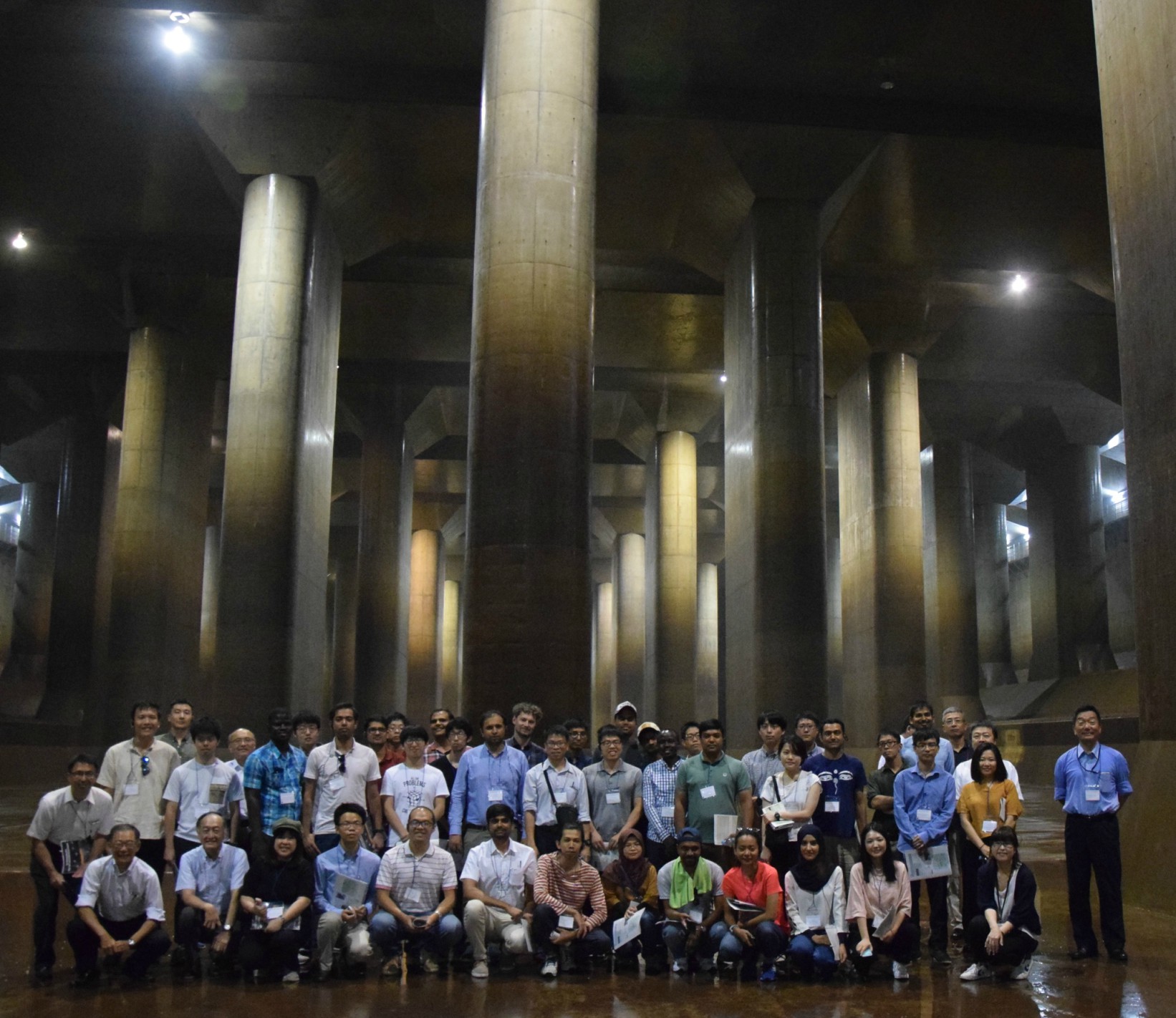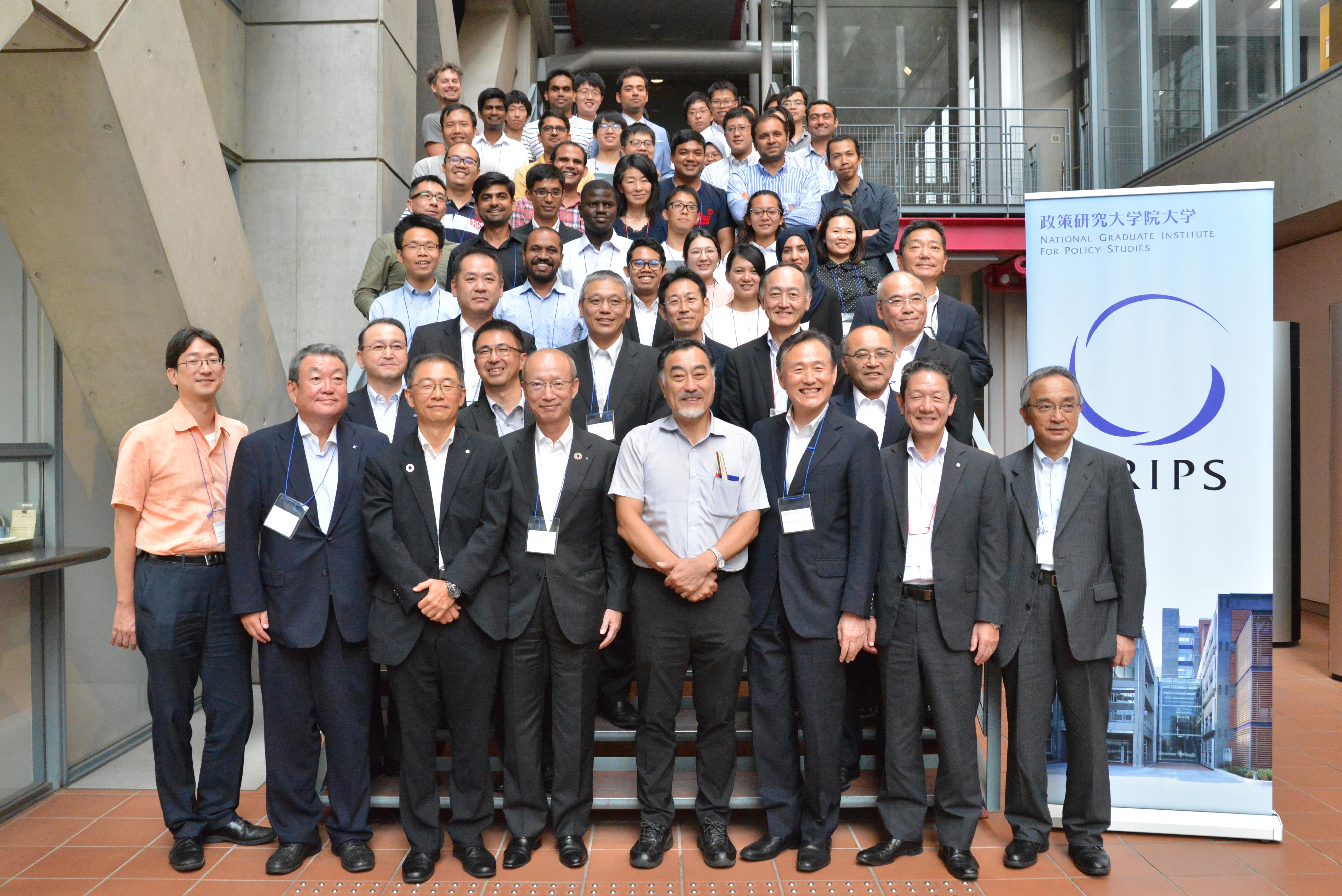A total of 40 people participated in the seminar, consisting of 35 foreign students from 16 countries and 5 Japanese students studying at graduate schools in Japan. The seminar was attended by intensive lectures and field trips on August 20, 2019 and 21st. On the first day, a high-level lecture was given by top level lecturers from industry, academia and government. On the second day, they visited the Metropolitan Area Outer Underground Discharge Channel and the Tokyo Outer Ring Road, which was under construction, and had a lively discussion while watching the site.


Message from the organizer
Hitoshi Ieda
Professor
National Graduate Institute for Policy Studies
The Summer Seminar for Foreign Students program provides high-level generalist education in Japan-related topics. The program is offered with the cooperation of leading experts in infrastructure, from both academia and private companies.
One of the basic principles of the policy of this seminar is, “The seminar should focus on aspects which Japan can proudly present to the world.” Among the four seminars offered in the past five years, “Shinkansen” and “Water Environment and Earth” will be offered for the second time, with new content. In FY 2019, with the cooperation of eight construction companies, a new seminar, dealing with Japan’s underground infrastructure technology, was offered. I feel that the above policy is being implemented consistently.
It is widely recognized that collaboration among industry, academia, and government is now essential to realizing a sustainable society on a global scale, a goal being pursued by various organizations. This seminar also lends support to that work, and efforts towards an ideal system of cooperation between industry, academia, and government are achieving success. In the future, we will continue to expand the scope of the seminar themes, and to hold seminars with the support of our industry-academia partnerships. In that way we will make a Japanese contribution to the expansion of the human network contributing to a sustainable society.
Voice of a participant
Yuka Nagura
Japan
National Graduate Institute for Policy Studies (GRIPS)
After joining a railway company, I was assigned to a department in charge of planning, designing, and supervising construction work for the improvement of subway structures, and I have accumulated experience. Currently, I am researching the development of an underground station plaza in National Graduate Institute for Policy Studies.
The learning at this seminar was a very valuable experience. In particular, a lecture by Mr. Kyozo Fujita of Penta-Ocean Construction Co., Ltd. was very interesting in that it introduced an example of high-quality Japanese civil engineering technology being exported to Singapore for the construction of subways. It was also impressive that many lecturers cited the transfer of education and technology to young engineers as an issue.
The tour of a Metropolitan Area Outer Fence Flood Control Channel provided a glimpse of how the facility responds to foreign visitors with great care, and I learned about the operation of infrastructure tourism, which attracts many visitors every year.
Furthermore, the time I spent with foreign students studying in Japan through this seminar gave me a chance to experience many values and was very stimulating. I was taught by my classmates who are always conscious of international perspectives to see Japanese civil engineering technology objectively.
Construction is expected to continue under more complex conditions in the diversified underground spaces of the Tokyo metropolitan area. I believe that these Japanese civil engineering technologies will contribute to infrastructure development overseas. I want to be a part of this technology export.
Message from the chair, Committee on the Summer Seminar for International Students
Kazumasa Ozawa
Professor
University of Tokyo
This year, for the first time, the theme of our special summer seminar series for international students was “Underground Space Supporting Mega Cities.”
The functions of Tokyo, the capital of Japan, are supported in large part by underground spaces; the applications of those spaces range from transportation networks and underground shopping malls to infrastructure such as electricity, gas and communications, and disaster response facilities. The use of underground space is very effective for the construction of highly concentrated cities on limited land. At the same time, however, the construction of underground spaces involves various risks, and advanced technologies and social systems are required to mitigate those risks.
In this seminar, leading administrative experts, researchers, and business people gave lectures based on their rich experience in the use of underground space in Tokyo. They discussed the progress of underground space utilization in Tokyo as it developed into one of the world’s leading cities, and examined the technologies and systems that support it. On the second day, the students observed the construction and use of a large-scale underground space in the suburbs of Tokyo and learned about the scale and social impact of that project.
It would be most gratifying if in the future the participating students could apply the knowledge they gained from this seminar and, by extension, contribute to the development of urban infrastructure in their own countries.
Message from the vice chair, Committee on the Summer Seminar for International Students
Katsuro Sugihara
President & Representative Director
SC Machinery Corporation
This year’s seminar took up the theme, “Underground space supporting megacities.” To open the seminar, administrative experts and top researchers gave overviews of the history to the present day of Japan’s development of legal structures to support underground space construction, future prospects for underground space technology, and the safety of underground malls. Next, leading figures from Japan and abroad laid out the details of the technology for construction of underground spaces under rivers, railways and roads, and gave examples. The session ended with a field researcher’s presentation of the results of his research on cave-ins, and discussion by a construction company executive of the history of Japanese construction companies and infrastructure development.
On the second day, the participants toured examples of the use of large-scale underground space in the suburbs of Tokyo: the metropolitan area outer fence flood control channel, already in operation; the Oizumi vertical shaft and shield tunnel on the Tokyo Outer Ring Road (under construction); and the excavation site for the Center Junction of the Chuo Expressway and the Tokyo Outer Ring Road. In the course of these site visits, the participants engaged in a lively exchange of opinions on technical and other issues.
We hope that through this seminar, the participants will not only learn about the underground space construction techniques of Japanese construction companies, but will also apply the knowledge acquired here to contribute to the improvement of social infrastructure in their home countries and around the world.
In the future, we would like to reflect the participants’ impressions of and opinions about this seminar in our work to create even more effective seminars.






